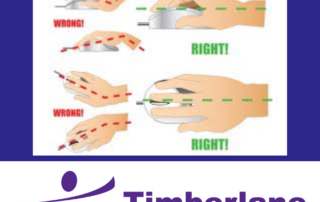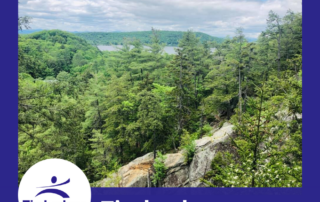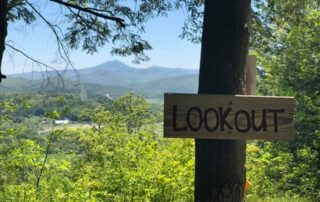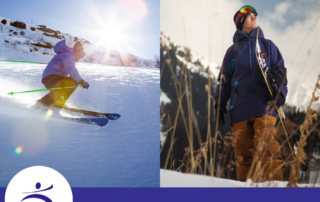Carpal tunnel syndrome
Overview Carpal tunnel syndrome is a common condition that causes pain, numbness, tingling, and/or weakness in the hand and arm. It is the most common entrapment neuropathy affecting approximately 3-6% of the adult population. It is the compression or inflammation of the median nerve as it passes through the carpal tunnel, a narrow passageway on the palm side of your wrist. In some cases, carpal tunnel syndrome can get worse over time and develop into significant impairments of strength and ability to perform activities of daily living such as typing, writing, buttoning clothes, holding objects, and other fine motor abilities. Cause Most cases of carpal tunnel syndrome are caused by a combination of several factors. It can be caused by trauma, repetitive stress and motions, inflammation, poor posture, and certain diseases. Other risk factors for carpal tunnel syndrome include: The carpal tunnel may be smaller in some people or there may be anatomic differences that change the amount of space for the nerve. It is more common in females possibly due to the carpal tunnel area being smaller. Repetitive hand use. Repeating the same hand and wrist motions or activities over a prolonged period of time may aggravate the tendons in the wrist, causing swelling that [...]
Take A Hike
Hiking has become a very popular way to improve overall health and enjoy the great outdoors, and it’s easy to maintain social distance! Here in Vermont, there are endless options ranging from easy strolls in the woods to half or full day more strenuous hikes. Hiking is a great workout option and the rewards are endless but can include: decreased stress, improved mood and well-being, reduced risk of heart disease, lowering blood pressure, improved bone density, https://www.cymplstudios.com/cymbalta-quality/ improved weight control, and connecting oneself with nature, friends, and family. Keep these 10 things in mind when starting to hike: Research the area and trail before you head out. Make sure it matches your current level of fitness and capability. There are many apps, books, trail guides, websites, and social media groups available for reference. Hike with a friend. Hiking with a partner is a safe and fun way to stay connected to each other and it is easy to maintain social distance. Having a partner with you will be helpful in case any injury or emergency occurs. Always carry your cell phone as well. Warm up with dynamic full body motions and stretches especially for the hips, trunk, arms, and legs. Pack enough water and light snacks [...]
5 tips for safe gardening
Now that the weather is finally warmer, everyone wants to be outside gardening. While this is a great way to stay active, gardening activities like planting, watering, lifting, transplanting, weeding, digging, raking, mulching, and mowing can cause stress and strain to your joints and muscles if not done correctly. Follow these 5 simple tips to help reduce pain while gardening: Warm up. Taking a quick walk and doing simple stretches for the spine, arms, and legs are a great way to help prepare your body for an activity like gardening. Change tasks and positions frequently. Be aware of how your body feels as you work in your garden. Having a raised garden bed can reduce the stress to your back by reducing the amount you have to bend over. If a part of your body starts to become painful, take a break, stretch, or switch to a different activity. If you have not been active in a while it may take time to build up to your desired activity level. Get help where you can. Use a garden cart or wheelbarrow to help move heavy items. It is easier to push something heavy than to lift something heavy. Use help wherever you can get it. Lift [...]
Body Mechanics Basics
Body mechanics is a term used to describe the way we move our body while we perform our activities of daily living in a way that limits the risk of stress or injury. It includes how we hold our bodies when we lift, carry, stand, sit, bend over, and sleep. Poor body mechanics are often a contributing factor to back pain. When we do not move in a safe manner, our spines can be subjected to increased stress that can lead to pain and problems, now and in the future. That is why it is important to learn the body mechanics basics. We can teach you how to move your body so that you can do everything you need to do but in a safe manner that can prevent back pain and injury. Analyze the situation. Plan your activity. Assess what you will be lifting and how you will lift it. Check the route to be traveled, clearing the pathway, opening the doors, etc. to reduce the risk of tripping or slipping. If you are lifting with the help of another person, explain what you plan to do and where you are going. Get help. If the load to be lifted is too heavy, get help [...]
5 simple balance exercises to help reduce your risk of falls
More than 1 in 4 older adults falls each year which can lead to pain, serious injury, loss of mobility and independence. One out of 10 falls results in serious injuries such as hip fractures and head injuries and are the leading cause of non-fatal injuries to adults over the age of 65. This can lead to lengthy, expensive, and painful recovery times and result in changes in a person’s independence and confidence. What are the risk factors? Falls are usually multi-factorial, meaning they may have more than one cause. This may include any number of personal, behavioral, or environmental risk factors. Personal risk factors include health issues that place a person at a higher risk for falling and may include muscle weakness, balance problems, impaired vision, chronic health conditions, joint pain, heart and lung conditions, loss of sensation in the feet, and incontinence. Behavioral risk factors may include being sedentary or inactive, alcohol or substance abuse that may affect judgment, not paying attention to one’s self or surroundings, being distracted, stress, trying to rush, and engaging in risky behaviors such as climbing ladders or standing on furniture. Environmental risk factors include having excessive clutter and things that may pose as a trip hazard, poor lighting, [...]
Five Exercises to Prevent Injury in Skiing and Snowboarding
Skiing and snowboarding can be a blast, and is a great way to keep active during the winter but it can cause of many of the injuries we see in the winter. There is opportunity for anything from wrist fractures or concussions from losing control and wiping out, to thigh strains or back pain injuries from over doing it. One of the reasons winter sports can cause injuries, is that they usually are not something we train for all year. Keeping fit with other activities all year round helps with preparation for winter sport season, but keeping the right muscles active and strong is important. What are the best exercises to do? Squats Squats are a great exercise to build quad and glute strength, and prevent knee injury. This is a motion you are going to be doing a lot of skiing. Many people do squats incorrectly, and then complain of knee or back pain. Make sure to check out our previous post on squat form. In short, hips should go back as if you are sitting on a chair, tipping your torso down is good just don’t round your back, your weight should be mostly in your heels. Add a jump, or jump & knee [...]







